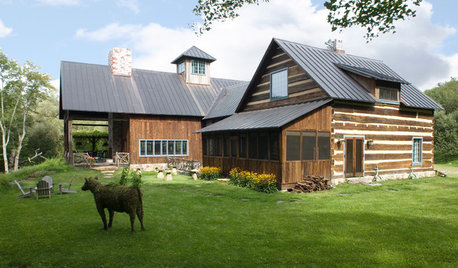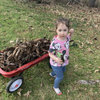Will I ever figure out chicken breast?...What am I doing wrong?
Begonia2005
9 years ago
Related Stories

DECORATING GUIDESThe Dumbest Decorating Decisions I’ve Ever Made
Caution: Do not try these at home
Full Story
LIFEThe Polite House: Do I Have to Display Decor Given to Me as a Gift?
Etiquette columnist Lizzie Post tackles the challenge of accepting and displaying home decor gifts from frequent visitors
Full Story
COLOR8 Color Palettes You Can't Get Wrong
Can't decide on a color scheme? Choose one of these foolproof palettes for a room that feels both timeless and fresh
Full Story
LIFEYou Said It: ‘The Wrong Sink Can Make You Hate Your Kitchen’
Design advice, inspiration and observations that struck a chord this week
Full Story
REMODELING GUIDESWhy Marble Might Be Wrong for Your Bathroom
You love its beauty and instant high-quality appeal, but bathroom marble has its drawbacks. Here's what to know before you buy
Full Story
GARDENING GUIDESWhat's Wrong With My Plant? Leaves Often Hold the Clues
Learn how to identify common plant ailments by reading their leaves
Full Story
FARM YOUR YARDHouzz Call: Show Us Your One-of-a-Kind Chicken Coops
Do you have a fun or stylish backyard shelter for your feathered friends? Post your pictures and stories in the Comments!
Full Story
LIFEThe Polite House: How Can I Tell a Construction Crew to Pipe Down?
If workers around your home are doing things that bother you, there’s a diplomatic way to approach them
Full Story
FUN HOUZZEverything I Need to Know About Decorating I Learned from Downton Abbey
Mind your manors with these 10 decorating tips from the PBS series, returning on January 5
Full Story
THE POLITE HOUSEThe Polite House: Can I Put a Remodel Project on Our Wedding Registry?
Find out how to ask guests for less traditional wedding gifts
Full Story




amylou321
Begonia2005Original Author
Related Discussions
what can I do with 2 chicken breast for supper
Q
What am I doing right/what am I doing wrong?
Q
I really want blooms! What am I doing wrong?
Q
Can you help me figure out where I am going wrong?
Q
amylou321
serge94501
Begonia2005Original Author
lizbeth-gardener
grubby_AZ Tucson Z9
iris_gal
Islay_Corbel
colleenoz
John Liu
marymd7
Jasdip
Begonia2005Original Author
bossyvossy
bbstx
lascatx
ken_adrian Adrian MI cold Z5
alex9179
arkansas girl
carolb_w_fl_coastal_9b
bbstx
lucky123
colleenoz
ken_adrian Adrian MI cold Z5
johnc777
Yinng
Gracie
alex9179
Acadiafun
John Liu
ghostlyvision
arlocat
violetwest
John Liu
plllog
Jasdip
evenshade
alex9179
John Liu
coll_123
lucky123
cookingrvc